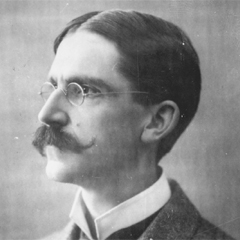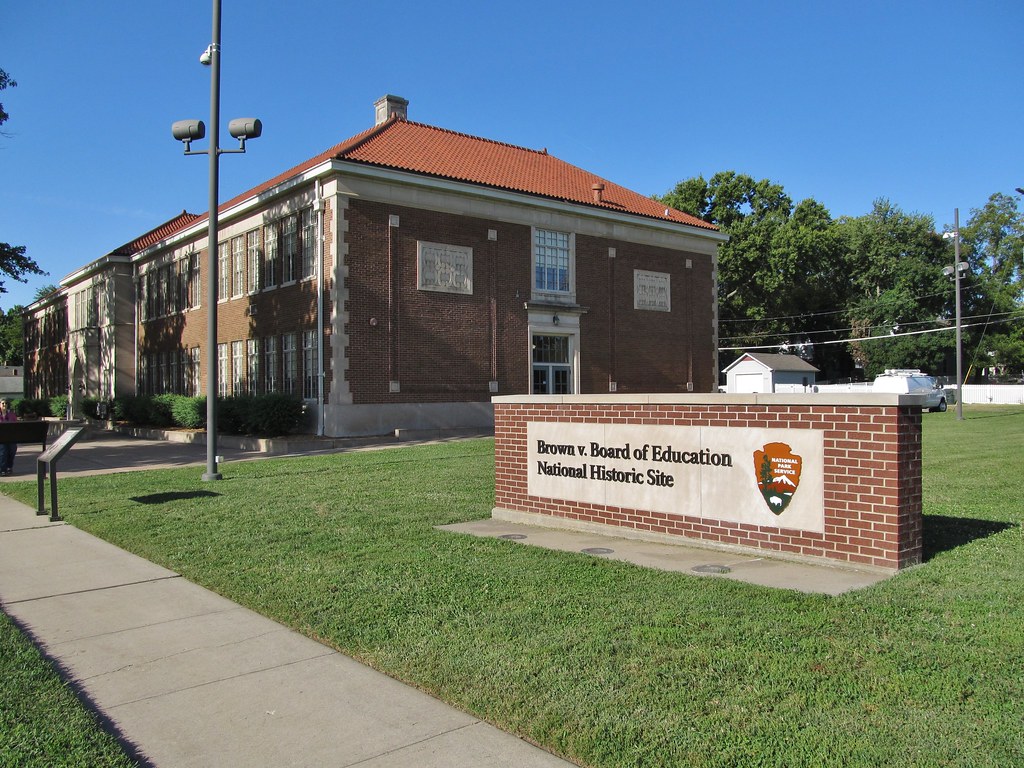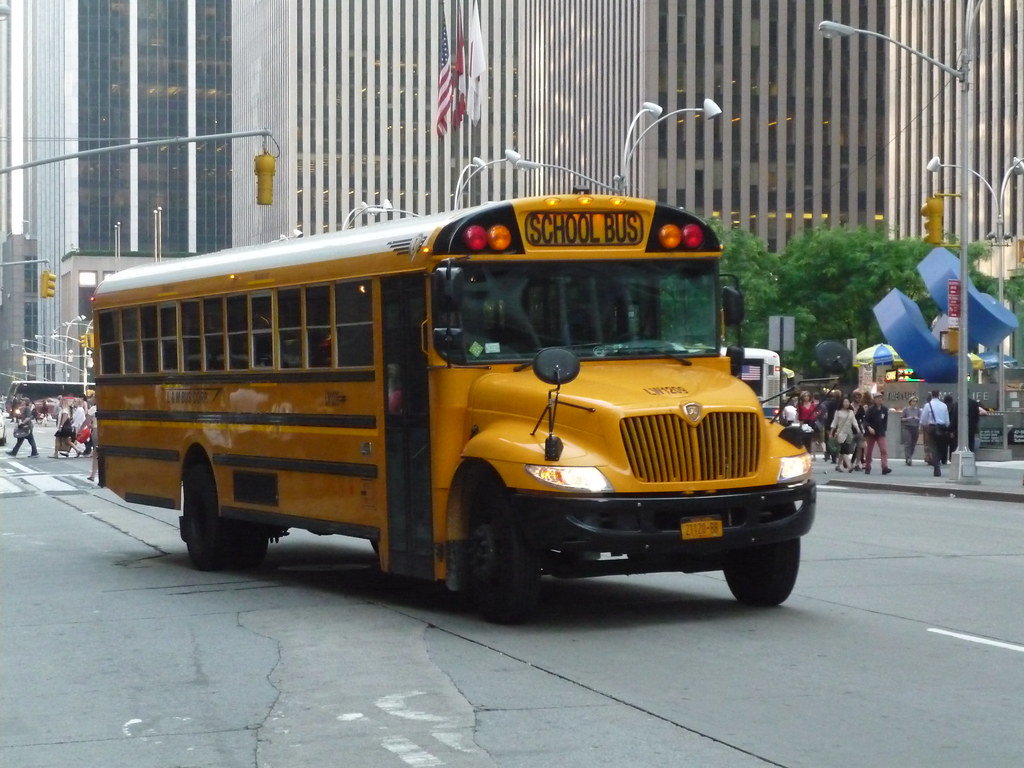3 Historical Foundations: Progressive Era To Present
You may have heard comments implying that education in the United States is not political, separate from religion, and accessible to everyone. The reality is that from its early existence in the New World in the 1600s, it was indeed political, religious, and accessible only to a select few. These traits continue to influence the evolution of education in the United States today.
In this chapter, we will explore how historical foundations have shaped the trajectory of education in the United States.
Chapter Outline
The Progressive Era
The Progressive Era was defined by social reform, and education was no exception. Many of the philosophies you learned about earlier in this chapter were established in the Progressive Era. Changes in education during this period included varying forms of progressivism, the emergence of critical theory, extending schooling beyond the primary level, and the development of teacher unions.
Differing Approaches to Progressivism
During the Progressive Era’s focus on social reform, different approaches emerged. One group was called administrative progressives, who wanted education to be as efficient as possible to meet the demands of industrialization and the economy. Efficiency involved centralizing neighborhood schools into larger urban systems, allowing more students to be educated for less money. Graded classes, specialized and differentiated subject areas, ringing bells, an orderly daily itinerary, and hierarchical management–with men serving as school board members, superintendents, and principals, and women at the bottom of the rung as teachers–also increased educational efficiency. Educational efficiency required preparing good workers for a rapidly changing economy. Administrative progressives adopted factory models in schools to become better at processing and testing the masses, a continued form of educational assimilation.

Curricular or pedagogical progressives were focused on changes in how and what students were learning. Many of these progressives saw schooling as a vehicle for social justice instead of assimilation. John Dewey is often referred to as America’s philosopher and the father of progressivism in education. In Democracy and Education, Dewey (1944) theorized two types of learning: “conservative,” which reproduces the status quo through cultural transmission and socialization, and “progressive,” which frames education more organically for the purposes of experiencing “growth” and broadening “potentialities” (p. 41). In this case, “progressive” learning has no predetermined outcome and is always evolving, or progressing. Democratic education, Dewey believed, must build on the existing culture or status quo and free students and adults alike toward conscious positive change based on newly-discovered information, improvements in science, and democratic input from all members of the community, which added legitimacy to a society’s growth.

Dewey and his like-minded progressives have often been referred to as social reconstructionists. They believed education could improve society. Dewey recognized “the ability of the schools to teach independent thinking and to the ability of students to analyze social problems” (Kliebard, 1995, p. 170). Dewey did not expect the school to upend society; rather, as institutions that reached virtually all youth, he saw schooling as the most effective means of developing the habits of critical thinking, cooperative learning, and problem solving so that students could, once they became adults, carry on this same activity democratically in their attempts to improve society. Their attempts were often met with contempt because such critique threatened the existing socio-political system, which conservative individuals wished to preserve.
Emergence of Critical Theory
In Germany in 1923, critical theory was developed at The Frankfurt Institute of Social Research. With roots in German Idealism, critical theorists sought to interpret and transform society by challenging the assumption that social, economic, and political institutions developed naturally and objectively. In addition, critical theorists rejected the existence of absolute truths. Instead of blind acceptance of knowledge, critical theorists encouraged questioning of widely accepted answers and challenged objectivity and neutrality, noting that these constructs avoid addressing inequality in political and economic power, social arrangements, institutional forms of discrimination, and other areas. The original Frankfurt School theorists were dedicated to ideology critique and the long-term goal of reconstructing society in order to “ensure a true, free, and just life” emancipated from “authoritarian and bureaucratic politics” (Held, 1980, p. 15).
A decade later amidst the Great Depression, America witnessed the emergence of its own Frankfurt School. In the United States, critical theory was aligned with social reconstructionism and situated in social foundations programs in various academic institutions, including its first department in Columbia University’s Teachers College. Why would this movement find its home in American education? Educators were “a positive creative force in American society” that could serve as “a mighty instrument of…collective action” (Counts, 2011, p. 21). Critique, reflection, and action, often referred to as praxis, are intrinsically educational, and these actions transcend the mere transmission of knowledge and culture. America’s social reconstructionists attempted to cultivate a specialized field that drew from many academic disciplines in order to develop professional teachers’ understanding of how schooling tended to reinforce, evangelize, or perpetuate a given social order. They repudiated a predetermined “blueprint” for training teachers, rejecting “the notion that educators, like factory hands, merely…follow blueprints” (Coe, 1935, p. 26).

When education stops reproducing the status quo, when we self-reflect and become self-critical, when we attempt to produce change and social improvement, when the work of powerful and vested interests is challenged by new knowledge, this is when intellectuals and education become threatening. What developed, and what continues to be a center of conflict today over the issue of education, is a struggle over two polarizing purposes of formal schooling. The first purpose is generally described as the transmission and indoctrination of the values, customs, ideologies, beliefs, and rituals, often controlled by and aligned with more powerful social groups. The second purpose of education, often perceived as more radical, is the view that education should serve as a means of critique and social reconstruction in order to improve society.
Post World War II & Civil Rights Era
In the decades following World War II, the U.S. prospered, and education saw many significant shifts, especially focusing on equality of educational opportunities. In this period, ongoing inequalities in educational opportunities led to limited federal funding, Brown v. Board of Education (1954) deemed segregated schools illegal, and other minoritized groups continued to fight for equitable access to education.
Ongoing Inequalities and Federal Funding
The 1945 Senate committee hearings on federal aid to education highlighted ongoing inequities in schooling, as well as the fact that “education was in a state of dire need” of financial resources and more equitable funding (Ravitch, 1983, p. 5). Most school funding came from property taxes, which continued to exacerbate inequities. Other changes took place following World War II to worsen already existing inequalities. After the War, “white flight” from the inner city to suburbs resulted in highly-segregated communities, falling urban property values, and rising suburban property values. White flight contributed to greater de facto segregation, and it increased segregated schooling and enhanced inequalities in school funding.

In response, the federal government offered limited assistance. The National School Lunch Program was passed in 1946 in order to enhance learning through better nutrition. In response to the anxiety created over the launching of the Russian satellite Sputnik, Congress passed the 1958 National Defense Education Act, which provided increased federal funding for math, science, and foreign languages in public schools. While these examples are not exhaustive, they illustrate the piecemeal federal approach to funding public schools: if a problem was perceived as a crisis and reached the federal legislative agenda, it was more likely to attract congressional funding.
In 1965, President Johnson worked with Congress in order to pass what became known as the Elementary and Secondary Education Act (ESEA). The ESEA served as the largest total expenditure of federal funds for the nation’s public schools in history. Aligned with Johnson’s war against poverty, the purpose of the law included increased federal funding for school districts with high levels of poor students. The law included six Titles (sections). Title I served as the primary legislative focus and included about 80 percent of the law’s total funding. Title I funds were distributed to poorer schools districts in an attempt to remedy the unequal funding perpetuated by reliance on property taxes. Title VII, or the Bilingual Education Act of 1968, provided funds for students who were speakers of languages other than English. The other Titles provided federal funding for school libraries, textbooks and instructional materials, educational research, and funds to state departments of education to help them implement and monitor the law. This resulted in the growth of state power alongside the expansion of federal power since states gained greater oversight of federal programs and mandates.
Separate is Not Equal

In 1896, Plessy v. Ferguson established the separate-but-equal doctrine. In its decision, the U.S. Supreme Court circumvented the original intent of the Fourteenth Amendment’s equal protection clause, which was intended to give all persons equal rights under the law. The Court strategically interpreted the clause to mean that as long as segregated public facilities were equal, they were constitutional.
The 1954 Brown v. Board of Education of Topeka decision ended the separate-but-equal doctrine. The National Association for the Advancement of Colored People (NAACP) found five plaintiffs representing four different states (Delaware, Kansas, South Carolina, and Virginia) and the District of Columbia to challenge segregated primary and secondary schools. All five cases were heard under the name Brown v. Board of Education of Topeka. The Court ruled unanimously in 1954 to overturn Plessy. In his majority decision, Chief Justice Earl Warren made the following conclusion:
Segregation of white and colored children in public schools has a detrimental effect upon the colored children. The impact is greater when it has the sanction of the law, for the policy of separating the races is usually interpreted as denoting the inferiority of the Negro group…Any language in contrary to this finding is rejected. We conclude that in the field of public education the doctrine of ‘separate but equal’ has no place. Separate educational facilities are inherently unequal. (347 U.S. 483, 1954)

After ruling segregation unconstitutional, the Court then had to consider a reasonable set of remedies in order to ensure desegregation. In 1955, The Court ruled in Brown v. Board of Education of Topeka II that desegregation would occur “on a racially nondiscriminatory basis with all deliberate speed.” This vague language, particularly the phrase “all deliberate speed,” contributed to chaos and enabled state resistance, with each state and district deciding its own approaches or avoidance thereof (Ryan, 2010).
When integration did take place, it occurred on white terms. Integration resulted in Black teachers losing their jobs and the closing of their schools. Black students were integrated into White schools and were suddenly being taught by White teachers while being subjected to an all-white curriculum. Black students and teachers alike experienced “cultural dissonance that exacerbated student rebelliousness, especially among African American boys.” Furthermore, “the actual implementation of integration plans and court orders remained largely in the hands of white school boards” (Fairclough, 2007, p. 396-400). Due to massive resistance to desegregation, Congress passed the 1964 Civil Rights Act as an attempt to force compliance. Following the passage of ESEA, which provided millions of federal dollars to each state, the federal government could now threaten non-compliant states (and school systems) by withholding these large sums of money annually under Title VI of the act.

Many urban school systems began drawing plans to bus white and non-white children to schools across neighborhoods in order to increase racial diversity in all of a district’s schools (i.e., Swann v. Charlotte-Mecklenburg Board of Education, 1971). However, in 1974 in Milliken v. Bradley, the U.S. Supreme Court decided schools were not responsible for desegregation across district lines if their own policies had not explicitly caused the segregation. President Nixon, who opposed inter-district busing, argued that in order to protect suburban schools, inner city schools should be given additional funds and resources to compensate urban school children from the harms of past segregation and the legacies of inequitable funding (LCCHR, n.d.). According to Ryan (2010), “Nixon’s compromise, broadly conceived to mean that urban schools should be helped in ways that [did] not threaten the physical, financial, or political independence of suburban schools… continues to shape nearly every modern education reform” (p. 5). The Milliken decision halted any possibility to integrate schools effectively. Due to the existence of de facto segregation, there was no significant way to integrate students unless they crossed district boundaries.
Nixon also worked with Congress to pass the 1974 Equal Educational Opportunities Act. This legislation embodied the rights of all children to have equal educational opportunities, and it included particular consideration to students with limited English proficiency (LEP). The EEOA’s applicable breadth is exemplified the law’s intent, which prohibits states from denying equal educational opportunity on account of race, color, sex, or national origin. Moreover, the EEOA prohibits states from denying equal educational opportunity by the failure of an educational agency to take appropriate action to overcome language barriers that impede equal participation by its students in its instructional programs.
Increasing Access to Education for Minoritized Groups
The African American Civil Rights Movement gave hope to Mexican and Asian Americans, as well as women, people with disabilities, and to a lesser extent, Native Americans. Like African Americans, Mexican Americans utilized the courts to overturn segregated schools in the southwest, particularly in Texas and California. In fact, the earliest segregation case was filed by Mexican Americans in 1931 in Lemon Grove, California[1]. Other cases would be filed in the 1940s and 1950s, including Mendez v. Westminster[2] in 1947.
A class action suit in San Francisco, California, led to legal rights for English Language Learners. In Lau v. Nichols (1974), parents of approximately 1,800 non-English-speaking Chinese students alleged that their Fourteenth Amendment’s equal protection rights had been violated since they could neither understand nor speak English, the language of instruction, which meant their children were not benefitting from educational services. The U.S. Supreme Court concluded that the school district violated Section 601 of the Civil Rights Act of 1964, which banned discrimination based “on race, color, or national origin” in “any program or activity receiving federal financial assistance.” As recipients of federal funds, schools were required to respond to the needs of English language learners effectively, whether this meant implementing bilingual education, English immersion, or some other method of instruction. The Court concluded, “There is no equality of treatment by providing students with the same facilities, textbooks, teachers and curriculum, for students who do not understand English are effectively foreclosed from any meaningful education.”
Children with special needs also received increased access to education, who historically had been excluded from many educational opportunities. In 1972, Pennsylvania Association for Retarded Children (PARC) v. Commonwealth of Pennsylvania[3], guaranteed the rights of disabled children to attend free public schools. Congress followed up in 1973 by enacting the Rehabilitation Act, which guaranteed civil rights for people with disabilities, including appropriate accommodations and individualized education plans to tailor education for students based on their unique needs. Providing children with disabilities in least restrictive settings was implemented in the 1975 Education for All Handicapped Children Act.
Women continued to fight for equal pay and respect in the workplace, and some success was achieved in the passage of Title IX as one of the amendments to the 1972 Higher Education Act. Title IX “prohibits discrimination on the basis of sex in any federally funded education program or activity” in “colleges, universities, and elementary and secondary schools,” as well as to “any education or training program operated by a receipt of federal financial assistance,” including intercollegiate athletic activities (The U.S. Department of Justice, n.d.).
Native Americans were able to enjoy greater control in limited ways over reservation schools including, but not limited to, the Rough Rock Demonstration School (recently renamed Rough Rock Community School[4]), located in northeastern Arizona. A collaboration between the Office of Economic Opportunity and the Bureau of Indian Affairs, the school opened in 1966 intending to give “Navajo parents…control” over “the education of their children” and to “participate in all aspects of their schooling.” Moreover, these efforts served as an “attempt to preserve the Navajo language and culture,” which was “in contrast to the deculturalization efforts of the nineteenth and early twentieth centuries” (Spring, 2008, p. 394). Despite the fact that the history of federal and Native Indian relations consisted in genocide, relocation, dispossession, and controlled boarding school experiments, Rough Rock Demonstration School continues to provide an example of Navajo empowerment and a locally developed form of Native cultural redemption.
The 1980s and Beyond
In the 1980s and beyond, education saw increasing federal supervision and support, though ultimate control of education still remained with individual states. In this period, the Department of Education was established, A Nation at Risk led to standards-based reform like No Child Left Behind, and social emotional learning emerged.
Establishing the Department of Education
While the federal government has no constitutional authority over public education, its power and influence over schooling has reached a pinnacle since the 1980s. In 1979, President Jimmy Carter created the federal Department of Education. Ronald Reagan, who succeeded Carter, tried and failed to abolish it. Reagan’s neo-conservative followers largely consisted of traditionalists and evangelicals. The traditionalists believed moral standards and respect for authority had been declining since the 1960s, while evangelicals (also known as the Religious Right) were concerned by increasing U.S. secularism and materialism (Foner, 2012). For example, in Engel v. Vitale (1962), the U.S. Supreme Court ruled that directed prayer in public schools was a violation of the First Amendment’s Establishment Clause, which forbids the state (public schools and their employees) from endorsing or favoring religion. While the Religious Right saw this decision as taking God out of America’s public schools, the Court viewed separation of church and state as necessary to protect religious freedoms from government intrusion. As established earlier in this chapter, however, the moral values taught in the public schools were often based on or connected to Protestant Christianity, so complete separation of church and state in schools was impossible.
A Nation at Risk and Standards-Based Reform
In 1981, Reagan created the National Commission on Excellence in Education to address the perceived problems of educational decline. In 1983, the commission released a 71-page report entitled A Nation at Risk. The authors of the report, who were primarily from the corporate world, declared, “American students never excelled in international comparisons of student achievement and that this failure reflected systematic weaknesses in our schools and lack of talent and motivation among American educators” (Berliner & Biddle, 1995, p. 3). However, A Nation at Risk was somewhat “sensational” (Urban & Wagoner, 2009, p. 402), containing numerous claims that were uncorroborated or misleading generalizations as a pretense for a larger political agenda intended to discredit public schools and their teachers.
Developing the perception that America’s schools were in crisis, A Nation at Risk justified a top-down, punitive approach to school reform. While standards-based reform had been around for several years as primarily a state issue, it “provided new theories about ‘systemic’ reform, which emphasized renewing academic focus in schools, holding teachers accountable for educational outcomes, measured by students’ academic achievement, and aligning teacher preparation and pedagogical practice with content standards, curriculum, classroom practice, and performance standards” (DeBray, 2006, p. xi).

The No Child Left Behind Act (NCLB, 2001) was an example of standards-based reform. As a bipartisan-passed reauthorization of the 1965 Elementary and Secondary Education Act, it was “the first initiative to truly bring the federal government as a regulator into American public education” (Fabricant & Fine, 2012, p. 13). Before, the federal government’s outreach typically extended only to funding; now, NCLB would hold schools, teachers, and students accountable for passing numerous standardized tests given annually in math and reading in grades 3-12. The law also required states to test English language learners for oral, written, and reading proficiency in English each year.
Critiques of NCLB include the acute focus on standardized testing and teaching to the test, uniform curricula that have little or no connection to an increasingly diverse student population, and the punitive nature of the law on students, teachers, and administrators. Madaus et al. (2009) asserted that testing “is now woven into the fabric of our nation’s culture and psyche,” which is evidenced by the fact that even “the valuation of homes in a community can increase or decrease based on these rankings” (p. 4-5). The most problematic nature of NCLB is its supporters’ assumption that uniformity, standardization, centralization, and punitive measures can compel learning and decrease achievement gaps. Assumptions that all children learn uniformly in all respects reveals a lack of understanding of the complexity of the learning process and the various demographic differences among children in a diverse society, including cultural, language, and ability differences.
CRITICAL LENS: STANDARDIZED TESTING
In a society experiencing greater diversity, it is more important than ever to realize how culture plays a significant role in shaping children’s school experiences, making standardized assessments all the more problematic as they tend to be culturally biased. Therefore, relying on standardized assessments in making conclusions about student achievement (or lack of achievement) make it all the more difficult for teachers to respond appropriately to the cognitive abilities of their students. Rote memorization and test preparation skills can easily inhibit creativity and imagination, not to mention the fact that this kind of educational focus is teacher-centered, less dynamic, and assimilatory.
In 2015, the No Child Left Behind Act (originally the Elementary and Secondary Education Act of 1965) was reauthorized as the Every Student Succeeds Act (ESSA). The law:
- Advances equity by upholding critical protections for America’s disadvantaged and high-need students.
- Requires that all students in America be taught to high academic standards that will prepare them to succeed in college and careers.
- Ensures that vital information is provided to educators, families, students, and communities through annual statewide assessments that measure students’ progress toward those high standards.
- Helps to support and grow local innovations, including evidence-based and place-based interventions developed by local leaders and educators.
- Sustains and expands investments in increasing access to high-quality preschool.
- Maintains an expectation that there will be accountability and action to effect positive change in our lowest-performing schools, where groups of students are not making progress, and where graduation rates are low over extended periods of time (U.S. Department of Education, n.d.).
By specifically tying federal funds to standardized assessments, standardized curricula, and accountability measures, along with requiring states and state education agencies to devote extraordinary resources toward fulfilling these mandates through oversight, America’s public schools were being governed by the federal government like never before. Increased federal influence illustrates the underlying belief that if the U.S. is going to maintain economic superiority and global competitiveness, public schooling must become a national responsibility. Contemporary goals focusing on preparing children to compete globally are significant for a number of reasons, not the least of which include the evolving nationalization of our public schools and the simultaneous loss of local authority and discretion over fundamental matters related to student learning.
Conclusion
Education in the United States has a complicated past entrenched in religious, economic, national, and international concerns. In the Progressive Era, efforts to maximize the efficiency of educational systems and to utilize education as a venue for social reform prevailed. After World War II, equitable access to education became a primary focus, as “separate-but-equal” doctrines were overthrown and schools grappled with institutional discrimination against non-White students, students with disabilities, women, and English Learners. The 1965 Elementary and Secondary Education Act provided federal funds to public schools, while states and local school districts continued to exercise considerable discretion over curriculum, assessments, and teacher certification. In the 1980s and beyond, increased pressures for standardization and accountability resulted in standards-based reform, including the No Child Left Behind Act in 2001. More recently, education has been leveraged to support all of a students’ developmental needs, not just academic.
Like learning, teaching is always developing; it is never realized once and for all. Our public schools have always served as sites of moral, economic, political, religious and social conflict and assimilation into a narrowly defined standard image of what it means to be an American. According to Britzman (as quoted by Kelle, 1996), “the context of teaching is political, it is an ideological context that privileges the interests, values, and practices necessary to maintain the status quo.” Teaching is by no means “innocent of ideology,” she declares. Rather, the context of education tends to preserve “the institutional values of compliance to authority, social conformity, efficiency, standardization, competition, and the objectification of knowledge” (p. 66-67).
It should be no surprise then that contemporary debates over public education continue to reflect our deepest ideological differences. As Tyack and Cuban (1995) have noted in their historical study of school reform, the nation’s perception toward schooling often “shift[s]… from panacea to scapegoat” (p. 14). We would go a long way in solving academic achievement and closing educational gaps by addressing the broader structural issues that institutionalize and perpetuate poverty and inequality.
Group in the early 1900s who wanted education to be as efficient as possible to meet the demands of industrialization and the economy.
Group in the early 1900s focused on changes in how and what students were learning; saw schooling as a vehicle for social justice instead of assimilation. Also called pedagogical progressives.
Group in the early 1900s focused on changes in how and what students were learning; saw schooling as a vehicle for social justice instead of assimilation. Also called curricular progressives.
Significant 20th century educator also known as the father of progressivism. Advocate for student-centered, problem-based learning. Published several books outlining the role of democracy in education to create thoughtful, productive citizens.
Group of progressive educators, like John Dewey, who ascribed to the educational philosophy of social reconstructionism, meaning they believed education could improve society.
Approach of constructing meaning through recognizing issues of power, access, and equity; often involves questioning and challenging the status quo.
Part of Civil Rights Act of 1964 that bans bans discrimination based on sex in places such as schools.
Established in 1979 by President Carter to provide federal oversight of education, though individual states still preserved primary control of educational decisions.
71-page report released in 1983 that sensationalized a "crisis" in American schooling that led to standards-based reform.
Standards-based reform passed in 2001 as a reauthorization of the 1965 Elementary and Secondary Education Act. Increased educational accountability through standardized testing.
2015 reauthorization of the Elementary and Secondary Education Act (1965) and No Child Left Behind Act (2002). Shifted accountability provisions to individual states.

